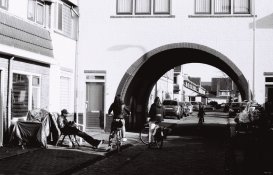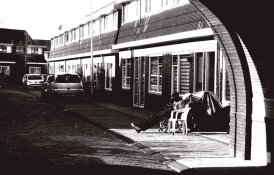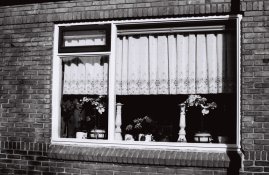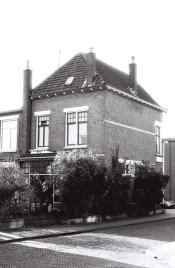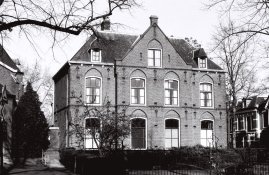flavio81
Member
I shot my FD 55/1.2 S.S.C. lens for the first time this weekend (and my 2nd roll with the F1-N). It handles perfectly, just like the F1-N. A very nice combination. I hope to get the film developed and scanned this weekend. Can't wait to see the difference with the FD 50/1.8 I used on my first roll with the F1-N.
The FD new 50/1.8 is a decent lens, contrasty, almost zero distortion, nice colors.
As canon put it on a brochure: "It passes lens tests with flying colors" and "It has a solid reputation for stable picture quality and sharp, crisp picture performance. "
Marco Cavina (has a website) has tested this one against a Summicron 50/2 (among others) and the image quality was comparable at f4-5.6, and together with the Leitz lens, the best of his test group. So it is not a bad or mediocre lens at all.
I think the 50/1.4 is a better lens, at least for colors -- i think it is a bit more contrasty and saturated. The FDn 50/1.8 was more of a "budget" lens with rather inferior build quality to the f1.4, while for example in Nikon both the 50/1.8 and 50/2 lenses are as well built as the 50/1.4, at least in pre-AI and AI versions. The FD 50/1.4 has very nice ball bearings for the aperture lever mechanism, while the FDn 50/1.8 does not have this luxury.
And i strongly feel the FD 50/1.4 is the best 50/1.4 of the Canon-Nikon-Pentax illustrious brands.
The FD new 50/1.4 was an improvement of the (famous) FD 50/1.4.
The FD 50/1.4 as well was the multicoated version of the FL 50/1.4 II. I have a "modern camera" magazine test of this lens (FL) compared to the previous version and other lenses, and the performance figures are impressive, and the reviewers were surprised as well. This lens was designed in 1968 "as part of a series of lenses with higher resolving power" (as the Canon museum puts it, see below). You can BET this was the year where the lenses for the future F-1 camera were designed, since the early (1971) FD lenses are mostly the same formula as those late (1968) FL lenses.
The FL 55/1.2 was designed almost simultaneously and from it, on a contemporary catalog, Canon said: "It is more advanced than the FL 50/1.4 II". Whatever that means. On other Canon text:
This lens has one of the highest lens speeds of any of the standard lenses used in single-lens reflex cameras, together with the FL 58mm F1.2 which is already on the market. The lens, belonging to the improved Gauss type, was developed by Canon to complete the series of lenses with higher resolving power and higher contrast. Utilization of four high-index glasses of a new type, together with a new design and positioning of the optical system, has completely eliminated high curvature of field and spherical aberration, resulting in greater center clarity, unusual for a lens with a maximum aperture opening of f/1.2.
The FD 55/1.2 is the multicoated FL 55/1.2. Another catalog says, this time about the FD 55/1.2:
This is a large aperture standard lens based on the optical system of the FL 55mm f/1.2. Despite its large aperture, it is highly reputed for its high contrast and stabilized image definition at full aperture opening. Because of its fast f/1.2 speed, it provides high image quality in low light level photography. Its optical performance is similar to the FD 50mm f/1.4 S.S.C. because both have fast lens speeds. Moreover, Canon has compensated for various aberrations, i.e., spherical aberration and coma
The FD new 50/1.2 is a totally different lens. And the FD new 50/1.2L is also a totally different lens to them.
Canon has a long pedigree of doing fast lenses, from the early 50/0.95 for rangefinder cameras to the R 58/1.2, the first f1.2 standard lens ever for SLR cameras. The evolution thus is:
R 58/1.2 --> FL 58/1.2 --> FL 58/1.2 2nd gen --//--> FL 55/1.2 ---> FD 55/1.2 --//--> FD 50/1.2
for the FD 50/1.8 the evolution is as follows:
R 50/1.8 (first version with a cemented front lens group) --//--> R 50/1.8 (2nd version, new 6/4 optical formula) ---> FL 50/1.8 ---//--> FL 50/1.8 II (2nd version, improved formula) --> FD 50/1.8 --//--> FD 50/1.8 S.C. (improved formula) --> FD new 50/1.8 (improved formula)
As i wrote before, i think the advantage of the 55/1.2 is on the very, very pleasing out of focus rendering. It also has very good definition once stopped down at f2.8 or narrower. It also looks fantastic on the F-1 !
My FD 50mm f1.4 is already a better optic than I'm a photographer and for the price of a FD 50mm 1.2 L lens on Ebay I could buy two Canon F1-N AE bodies.
Yes Benji, i agree that the 50/1.4 is the best value, but i'm talking about the FL 55/1.2 or the FD 55/1.2, they are not expensive at all. The FD 50/1.2L is a totally different lens, a luxury item with ground aspheric surfaces, much more expensive.
And, of course, the FD 55/1.2 S.S.C. is a totally different lens than the "FD 55/1.2 ASPHERICAL" which is perhaps the ultimate Canon standard lens.
Last edited:










